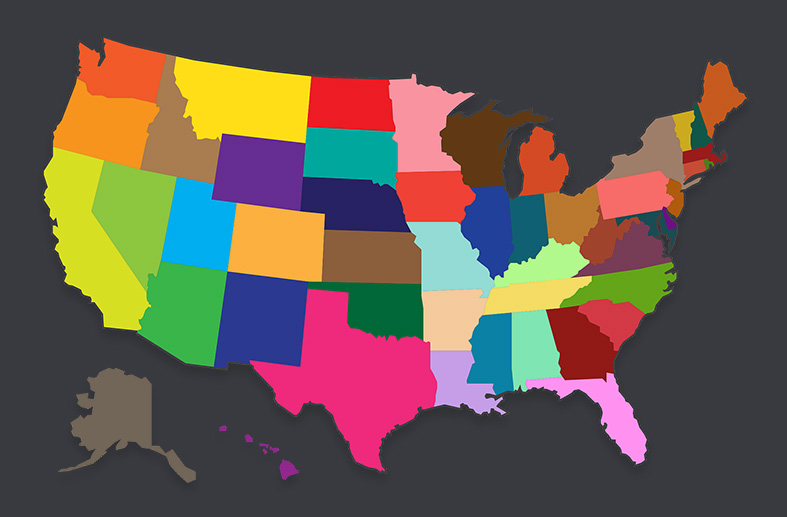How Advanced Analytics Can Help with Out-of-State Recruitment

Chris Lucier
As schools seek to achieve their enrollment goals by identifying and recruiting students who are admissible, good fits for their institutions, and have the potential to persist, graduate, and be successful, they are increasingly looking outside of their traditional feeder markets.
And year after year, more institutions are trying to expand their admissions footprints. According to a 2019 survey of Admissions Leaders, 65 percent of admissions directors said they were pursuing more out-of-state students. At Othot, we’re seeing this trend among our partner institutions as well.
There are several reasons for this trend:
- To grow enrollment overall and/or within specific programs
- To increase net tuition revenue after aid
- To build a more diverse enrollment, including seeking geographical diversity
- To extend their institution’s post-graduate impact
Grow or Sustain Enrollment
It’s not news that college enrollment is trending down. The population of U.S. high school graduates is declining. According to the Western Interstate Commission for Higher Education’s report Knocking at the College Door, the number of high school students is expected to fall by 6.8 percent or 1 million students from 15.4 million students in 2022 to 14.3 million students in 2028.
There will be regional differences, with the South and West experiencing growth in the number of high school graduates until mid-decade when the population declines. The Northeast and Midwest will continue to see the number of graduates decline, a trend that began this past decade.
In addition, the race and ethnic composition of high school graduates will change significantly. The populations of Hispanic and Asian/Pacific Islanders high school graduates will increase, while the population of White graduates will decline.
These factors are leading colleges to recruit outside of their typical geographic areas to achieve enrollment goals related to quality, diversity, and net revenue.
Increase Net Tuition
State governments have cut budgets to support higher education, including several times during and soon after the Great Recession. In only a very few rare cases have higher education budgets recovered to their pre-2007 levels. This has led to more and more public universities recruiting and enrolling out-of-state students, including international students, to maintain or grow net revenue.
University of Alabama (UA) is just one of many examples. Since 2008, UA has slashed nearly $556 million from higher education funding. As UA looked elsewhere to make up for lost state appropriations, their net tuition revenue doubled from 2008 to the 2012-13 fiscal year, from $193.5 million to $386.9 million. It’s no coincidence that during that time period out-of-state student enrollment was on the rise.
Since the net revenue per student for an out-of-state student will likely be greater, often significantly greater than an in-state student, even after aid, it is a prudent strategy to push into out-of-state markets.
Enrollment at most private institutions is from the state the institution is located in or neighboring states. As the population of high school graduates declines and evolves, and more and more public institutions seek to enroll larger numbers of out-of-state students to sustain enrollment and net revenue after aid, private institutions may have to push out beyond their traditional footprints.
Geographical Diversity
The very promise of a college education is not only knowledge and learning, but also exposure to people from different backgrounds, cultures, religions, and geographic regions.
Different perspectives in educational settings provide better social and intellectual development, create a more stimulating environment, and increase cultural awareness and commitment to racial understanding. That’s important as schools prepare students to enter a diverse workforce.
According to a Gallup-Purdue study, graduates exposed to diversity believe their degree is more valuable. Given the importance to students and to the demands of the workforce, higher education institutions are looking outside of their state lines to recruit students.
Post-Graduate Impact
Lastly, some colleges are seeking to expand their geographic footprint because of the post-graduate impact. Alumni are the ‘product’ of higher education, and schools seek to graduate students who will make an impact.
Where Data and Advanced Analytics Can Help with Out-of-State Recruitment
The key to achieving any one of those objectives is finding untapped opportunities, and you can with data and advanced analytics.
The opportunities fall into three groups: quantity, fit, and interventions. Independently these levers can be used to address each objective. For example, to grow enrollment, you could purchase more names to increase quantity, admit students that are a better fit and more likely to yield, or target groups of students at the right time with the right recruitment tactic because the analytics reveal that you can increase the likelihood of enrollment among those students with that tactic.
But constraints like population sizes, costs, and competition put limits on each opportunity. The key is being able to coordinate and synchronize all three so you can achieve each enrollment objective efficiently.
TIn order to do this, you need the ability to answer three questions:
- Where can I find more prospective students who can support my goals related to quality, diversity, and net tuition revenue after aid?
- Which prospective students are the best fit, i.e. they are likely to persist and graduate?
- Which intervention tactics, when applied, will improve retention and persistence?
Here’s the good news - the answers already exist within your institutional data.
Historical institutional actions and student behavior contain the answer to each question. The hard part is pulling out the true drivers of behavior. But once you do, you can find characteristics of geographical markets with untapped good fit prospects that can be nudged in just the right way to meet the objective(s) you are trying to achieve.
If your current solution can't answer the above three questions, you aren't being as efficient with your scant resources as you could be.
Moving Forward
As you seek to expand your recruitment efforts and enrollments to markets outside of your traditional geographic footprint and given the realities of the market, i.e. demographics, price sensitivity, competition, you will need accurate data and advanced analytics to efficiently achieve your goals. The clues and answers are there, but they are often hidden. With sophisticated modeling and intuitive displays, you can uncover the right answers at the right times.
This post is co-authored by Bob DiMaggio.

Chris Lucier



